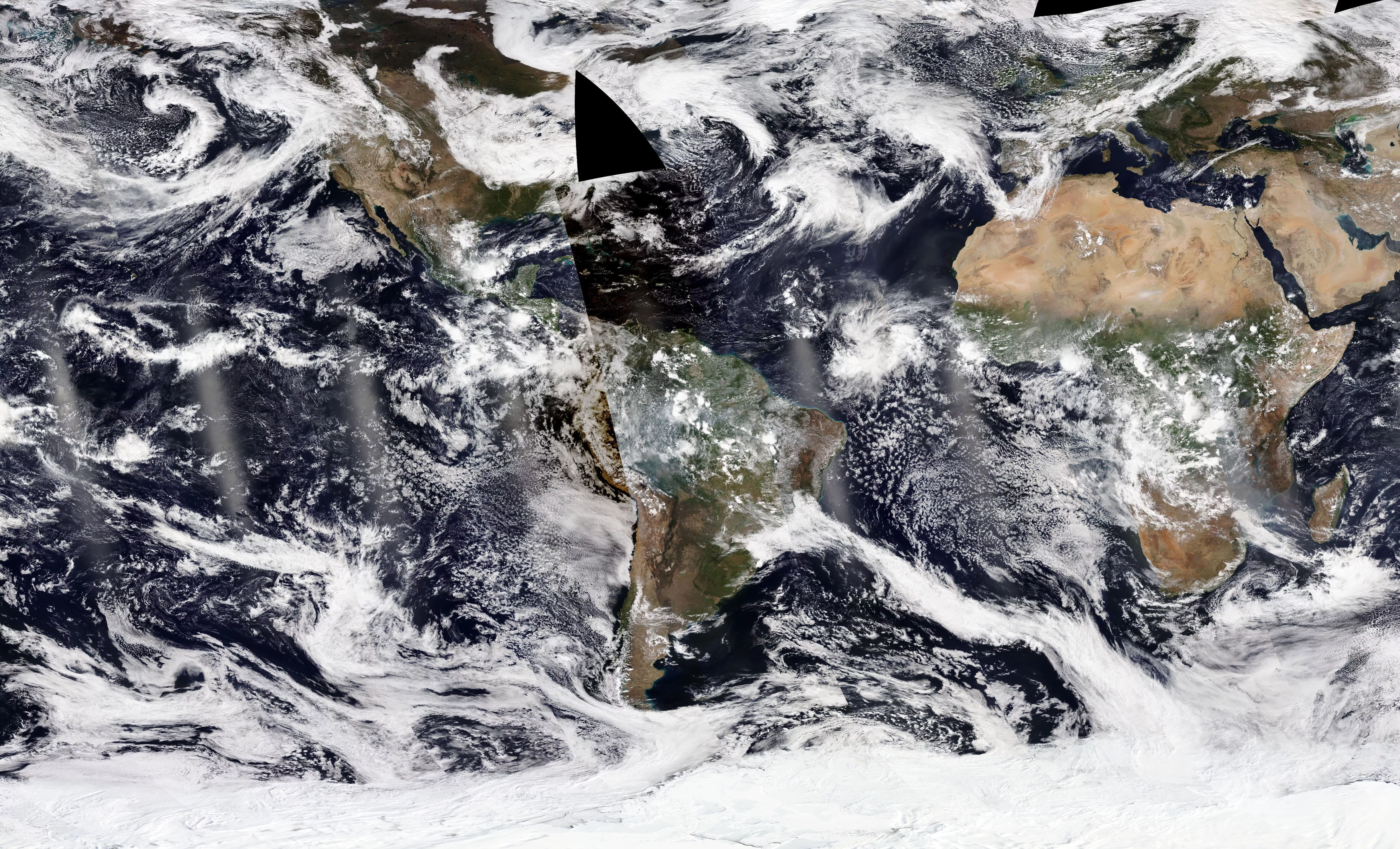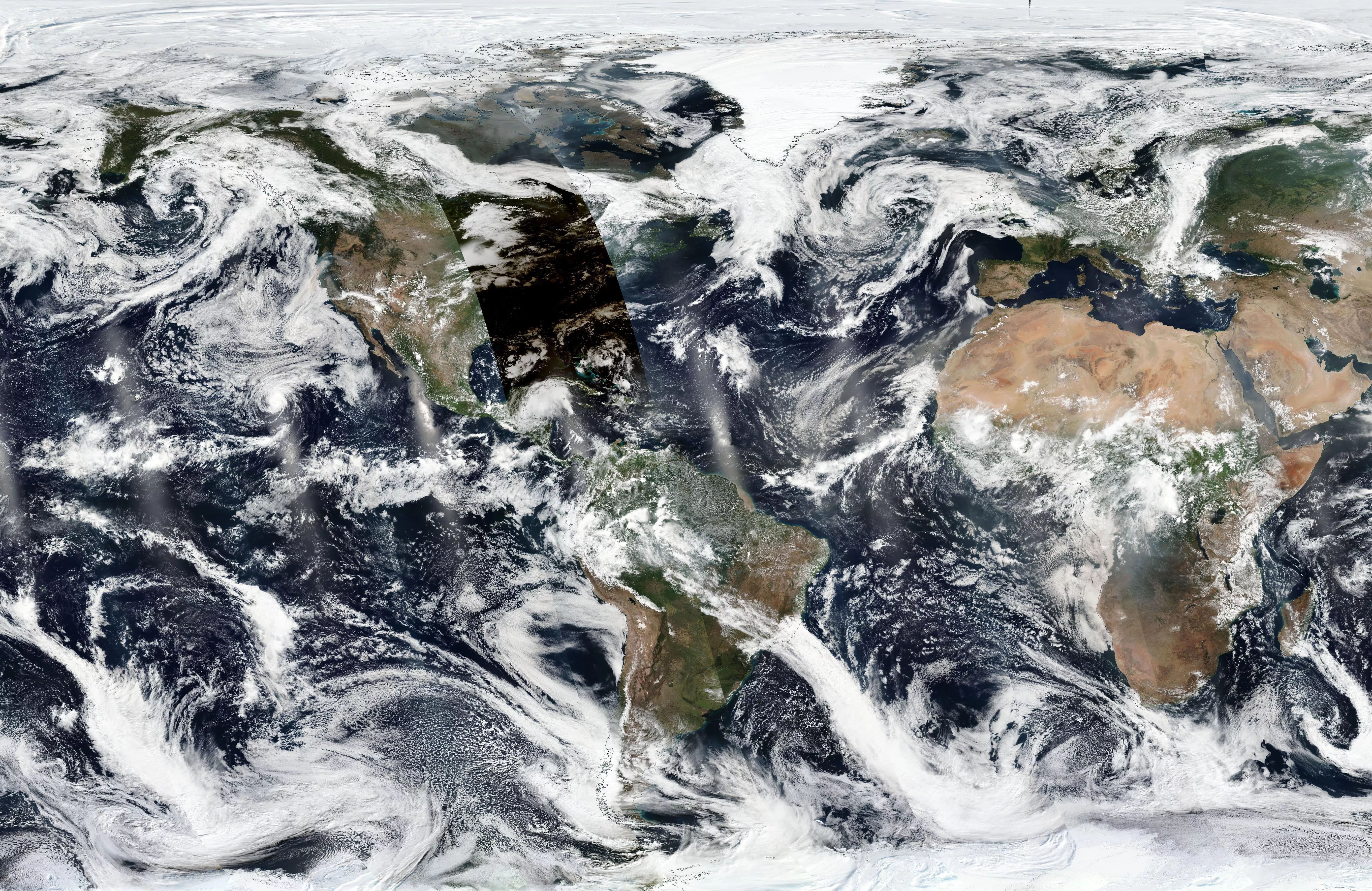On October 14, 2023, an annular, or ring-shaped, solar eclipse passed through Albuquerque, New Mexico during the International Balloon Fiesta. The annular eclipse occurs when the Moon passes between the Sun and the Earth while it is at its farthest point from Earth, leaving a ring of the sun visible around the Moon’s shadow. The path of the eclipse crossed over the western United States down through Texas to Mexico and into Central and South America. NOAA and NASA teams were on the ground in Albuquerque to ensure Fiesta attendees safely observed the phenomenon, with the proper eye protection and safe solar viewers.
During the annular eclipse, the Joint Polar Satellite System (JPSS) continued its daily journey orbiting Earth and collecting vital climate and weather data. JPSS satellites’ Visible Infrared Imaging Radiometer Suite (VIIRS) instrument on NOAA-21 and Suomi-NPP captured images of the shadow from the eclipse as it crossed from Central America into South America.

NOAA's GOES satellites were able to capture a time-lapse of the Moon’s shadow moving across the Earth.
Back on August 21, 2017, for the first time in nearly 100 years, a total solar eclipse passed over the contiguous U.S. from the Pacific to the Atlantic. A total solar eclipse occurs when a New Moon passes between the Sun and Earth, completely blocking the face of the Sun. JPSS satellites flew over the path of totality as it crossed the Southeastern United States.

During an eclipse, annular or total, noticeable weather changes occur. During the August 2017 eclipse, the temperature dropped by an average of 12 degrees Fahrenheit. Wind speed dropped by about 2 mph. As a result of the lower temperatures, clouds dissipated in the Southern states. Cumulus clouds need warm updrafts to survive. When an eclipse occurs, the drop in sunlight reaching the ground cools the surface along the shadow's path, preventing those warm updrafts and diminishing clouds. Researchers also observed a 20% increase in relative humidity especially in the Great Plains and the American Southwest. In Albuquerque during the October 2023 annular eclipse, observers noticed a drop in temperature and decreased cloud cover as well.
The next total solar eclipse will occur on April 8, 2024 and the North American path of totality will begin in Mexico, enter the U.S. in Texas, and travel up through Maine. It will then move into Canada and exit continental North America off the Atlantic coast of Newfoundland. The path of totality for the 2024 eclipse is much wider than the 2017 total solar eclipse. During the 2017 eclipse, the Moon was farther away from Earth than it will be during the upcoming total solar eclipse, causing the path of that eclipse to be thinner. In 2017, the path ranged from about 62 to 71 miles wide. During the April eclipse, the path over North America will range between 108 and 122 miles wide, covering far more ground than in 2017 and passing over more densely populated areas allowing even more observers to see the phenomenon. The duration of totality will also be longer in April, with totality lasting from three minutes and 21 seconds to four minutes and 26 seconds in the United States. In 2017, the longest period of totality was two minutes and 42 seconds in Illinois.
The Sun is also in a period of heightened solar activity right now, as opposed to 2017 when it was in a solar minimum due to its ever changing and complicated magnetic field. During the upcoming eclipse, the Sun will be in or near solar maximum, meaning the magnetic field is more tangled as it flips and twists during its activity cycle, allowing observers to see streamers, cusp-like structures coming off the corona, and providing a better chance to see pink curls and loops coming off the Sun. However, one thing that will be the same during this eclipse is that JPSS and GOES satellites will again capture images of the eclipse’s shadow as it passes over Earth.
The next total solar eclipse visible in the contiguous United States will occur in 2044.